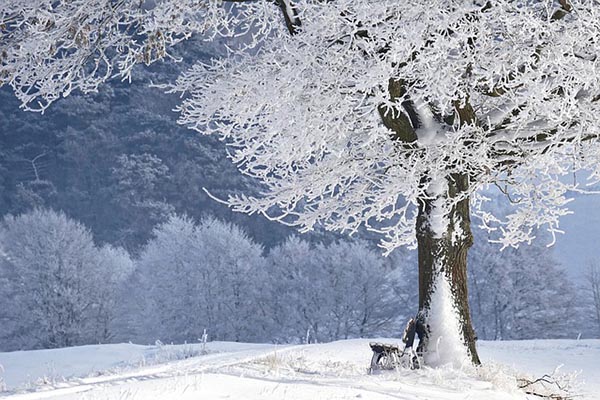Tired Tires
Your safety rests on four wheels-yet many defective tires cause related family tragedies. Winter driving is around the corner-are you ready? Recall a few short seasons ago the Ford Explorer with Firestone tires was crashing and causing serious injuries.
After a lengthy Congressional Investigation it was determined that the cause of accidents-tire related accidents-was the consumers fault. You do not keep your tires filled with the proper amount of air and this caused all the accidents.
This was a very expedient way of relieving the tire industry and Ford from litigation, as well as millions of dollars in settlements. Congress also mandated that this would not happen with new tires in the future.
Subsequently all new vehicles sold this year have a complete wheel that is self-inflating. This may sound good, but the expense is passed on to you and when that tires wears down, becomes road damaged, or otherwise no longer meets the standards for safety, you have to replace the entire assembly. Road punctures and such require a specialized shop trained staff as well as tools.
If you are buying a new car this year and do not want the installed new complete tire sealed to a special rim, you can special order a larger size tire, as an option, and obtain a conventional tire of less cost. Another interesting fact about tires is that tire shops sell tires, often-unused “new” tires that are old and dangerous. If you think about it, tire manufacturers make millions of tires each year. These are shipped out to distributors and then to retail dealers. The date of manufacturer on each tire is branded into the tire on the inner mumbo jumbo data at the rim and is easy to spot. It is branded to the number of weeks in the year of manufacturer and the year it was made. For example 44 1, which is: the 44th week and 2001.
The State Police who know more about tires than we do state that a tire over five years of age is dangerous. The tire industry recommends tires be changed every six years. This is because tires, even though they sit on the dealers shelf-age-become more brittle and the likelihood of the outer belt of tire tread peeling off is a death sentence.
In this case you have seen “alligators” in the road expressways-tire belts hither and yon. To understand this further go to this site and watch the TV clip: Click here!
The last time you bought tires did you check the age of the tire? Probably not-I didn’t. I will from now on though.
Big trucks, big Jeeps with big tires place an undue stress on the bearings. Pulling the tires off, inspecting the bearings and repacking with fresh grease is recommended. Somewhere along the line I installed China made bearings and they were failing. I am currently replacing with Timken bearings, which are USA made. They last. Auto-Zone sells Timken bearings.
Failing bearings usually start with a clicking noise, and then overheat. Lastly your spindle, which holds your entire wheel assembly, burns off and you crash. Check bearings at least every 10,000 miles, and more so if you are driving in creeks and sandy areas. If you are a DIYS’er, www.JCWhitney.com sells an inexpensive bearing packer and excellent bearing grease. Lubrication grease is not bearing grease.
Although we seldom go out, especially in icy winter weather, the occasion may arise for some perceived emergency trip. Trying to get up Poff Hill in Floyd is like climbing Mount Everest. Vehicles going up cannot make it, those going down, well they just slide down. I have been an advocate of proper tires for years for the season. Although costly as an initial investment I now have four studded snow tires and four town and country summer tires. We live in the sticks and rough specialty tires are necessary. I am not a tire chain advocate unless you live in Maine of Minnesota where there is snow on the ground all winter that cushions the tires. Chains on dry pavement will eat your tires up.
When you are driving at 45 to 55 MPH on the straight, smooth highway and you feel a front end chatter in the steering, that implies you need a wheel balancing. Usually it is recommended every 5,000 miles to rebalance and rotate tires. If you have rough tread tires you will need to pick out all the captured stones at the auto shop BEFORE balancing-they won’t. The lodged stones will cause an imperfect balance and may cause a continued wobble in the tires at 45-55 MPH.
If this does not solve the problem, then you need a new alignment. Further wobble indicates tie rod problems. Your specialist will advise. Keep in mind they all have different prices and different agendas. Shop around. I prefer Sears for alignment work as they have the latest equipment and trained mechanics.
Since Congress decided it is the consumers fault that the tires are under inflated it behooves you to be more consistent in keeping the tires properly filled. Tires have to be cool. No blistering sunshine on the tires for hours on end, no zooming around trying to find an air machine. I would recommend purchasing your own small portable combination battery charger-emergency light and air compressor-all in a small package. Advance Auto sells a reliable model.
On your day off in the cool of the morning, or evening, use a tire gauge and check your pressure. Radial tires roll best at 35 PSI, but no more, or you lose the radial effect. Replace the tire cap when done.
When you purchase new tires I would suggest installing stainless steel valve tire inserts vice: the rubber ones. These steel inserts do not get torn off in bad roads and brush. They are only a dollar each at Auto-Zone.
Lastly it is important to shade your vehicle and tires for better life. If you cannot garage your vehicle you need-seriously-to protect your tires with vinyl wheel covers. I bought six for my truck and trailer in the RV section of J.C.Whitney. These were superior covers and do a wonderful job of keeping the UV rays off the rubber.
Tires are becoming very expensive and it pays to take care of them. If you want to get extreme about your thousand dollar tires, rent a 100 lb. bottle of nitrogen from a welding supply, vacuum pump your tires down and fill with nitrogen. It is the oxygen that also contributes to tires’ deterioration. For the spare tires you rotate you can place a tire on a large plastic 6 mil sheet, wrap it up to a funnel and use a shop vac to suck the air out-shrink wrapping the tire. Fold the funnel like neck over and crimp off with duct tape till there is no more air leak. Small passenger tires can be inserted in clothing shrink plastic bags found at Wal*Mart ™ .
E-mail me at back2theland@swva.net
COPYRIGHT: 2008, Back2theLand.com, Mark Steel.



